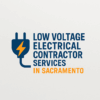Benefits of Structured Cabling Systems in Sacramento: Why Businesses & Homes Should Invest
Introduction
Structured cabling systems Sacramento are the backbone of modern connectivity for Sacramento businesses and homes. By organizing and standardizing network infrastructure, these systems enhance performance, reliability, and scalability. Whether you’re installing a small office network, a large commercial setup, or a smart home system, understanding the benefits of structured cabling helps you make informed investment decisions.
Table of Contents
- What is Structured Cabling?
- Key Components of Structured Cabling Systems
- Benefits of Structured Cabling in Sacramento
- Cost Considerations
- Common Misconceptions
- Choosing a Professional Installer
- Future Trends in Structured Cabling
- FAQs About Structured Cabling Systems
- Conclusion
What is Structured Cabling?
Structured cabling is a standardized system of cabling and connectivity components that supports multiple hardware uses and is designed to handle current and future networking needs. Unlike point-to-point or ad hoc cabling, structured systems follow a hierarchy with organized pathways, patch panels, and labeling, ensuring reliability and ease of maintenance.
Key Components of Structured Cabling Systems
- Horizontal Cabling: Connects workstations to network closets, usually Cat5e, Cat6, or Cat6a.
- Backbone Cabling: Links different floors or buildings with fiber or copper.
- Patch Panels and Switches: Centralized termination and distribution points.
- Racks and Enclosures: Organizes network equipment and cabling.
- Telecommunication Rooms: Central hub for network management.
Benefits of Structured Cabling in Sacramento
1. Enhanced Reliability and Performance
Structured cabling reduces network downtime by eliminating tangled cables, improving signal quality, and allowing for easier troubleshooting.
2. Scalability and Flexibility
Easily add new devices, workstations, or systems without overhauling the entire network, ideal for growing Sacramento businesses.
3. Simplified Management and Maintenance
Centralized labeling, patch panels, and well-organized cabling make it easy to identify, repair, or upgrade network connections.
4. Cost Savings Over Time
While upfront costs may be higher than ad hoc cabling, structured systems reduce labor, downtime, and maintenance costs in the long run.
5. Supports Multiple Applications
One cabling system can support voice, data, video, CCTV, security, and smart building systems simultaneously.
6. Future-Proofing
Structured cabling can handle higher bandwidth requirements and adapt to emerging technologies such as PoE, IoT devices, and fiber networks.
7. Compliance and Safety
Following industry standards (TIA/EIA, BICSI) ensures code compliance and reduces fire hazards caused by messy or overloaded cabling.
Cost Considerations
| Structured Cabling Component | Average Cost in Sacramento | Notes |
|---|---|---|
| Horizontal Cabling (Cat6/Cat6a) | $100–$250 per drop | Material + labor |
| Backbone Cabling (Fiber/Copper) | $150–$400 per run | Long-distance connections |
| Patch Panels & Enclosures | $100–$500 | Depending on scale |
| Professional Installation | $50–$150/hour | Rates vary by Sacramento contractors |
Tip: Proper planning and structured installation reduce hidden costs associated with network downtime and upgrades.
Common Misconceptions
- Myth 1: Structured cabling is only for large businesses.
- Truth: Homes, offices, and campuses benefit equally.
- Myth 2: It’s too expensive.
- Truth: The long-term savings and reliability outweigh initial investment costs.
- Myth 3: Wireless networks make structured cabling unnecessary.
- Truth: Wi-Fi relies on robust wired infrastructure for optimal performance.
Choosing a Professional Installer
- Ensure the contractor follows BICSI/TIA/EIA standards
- Check experience in Sacramento-based installations
- Request references and examples of completed structured cabling projects
- Verify warranty and maintenance support
Professional installation guarantees performance, compliance, and longevity of your structured cabling system. Low Voltage Maintenance Contracts
Future Trends in Structured Cabling
- High-Bandwidth Fiber Expansion: Preparing networks for 10 Gbps+ speeds.
- PoE Growth: Supporting cameras, phones, and IoT devices without additional power lines.
- Smart Buildings Integration: Centralized control of lighting, HVAC, and security.
- Cloud-Managed Networking: Simplified remote monitoring and management.
FAQs About Structured Cabling Systems in Sacramento
Q1: How long does structured cabling installation take?
A: Residential setups may take a day, while commercial buildings can take several days depending on complexity.
Q2: Can structured cabling support CCTV and security systems?
A: Yes, one system can integrate data, voice, video, and security devices simultaneously.
Q3: Do I need a permit for structured cabling in Sacramento?
A: Some commercial or extensive installations may require permits. Check with Sacramento Building Services.
Q4: How often should I upgrade my structured cabling?
A: Typically every 5–10 years depending on technology needs and bandwidth requirements.
Conclusion
Investing in structured cabling systems in Sacramento ensures reliable, scalable, and future-ready networks for homes and businesses. Beyond improved performance, these systems simplify management, reduce long-term costs, and support a wide range of applications. Professional planning and installation are essential to maximize these benefits and future-proof your network infrastructure. Get a Low Voltage License in Sacramento
